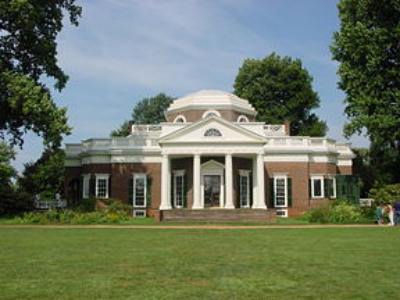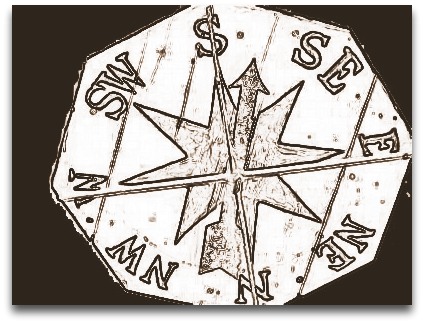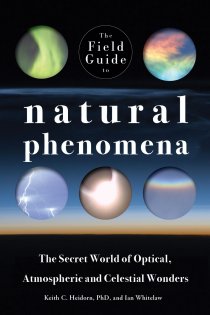 |
 |
| Home | Welcome | What's New | Site Map | Glossary | Weather Doctor Amazon Store | Book Store | Accolades | Email Us |
 | |||||||||||||
Weather Almanac for July 2012THOMAS JEFFERSON,
|
|||||||||||||
 |
 |
Thomas Jefferson's Monticello |
Drawing of Weather Vane Dial |
Even in his advancing years, Jefferson continued to seek understanding and continued to record his weather observations. His last entry in his weather journal came on 29 June 1826. Six days later, on the fiftieth anniversary of Independence Day, Thomas Jefferson passed away, just hours before his long friend and rival John Adams.
I have purposely omitted discussion of some of the insights Jefferson drew from his observations of weather until now, in part because a chronology is hard to piece together and is not as chronologically flowing as would be the case of a man fully dedicated to science. That Jefferson found time amid his crucial work as a statesman and government leader to undertake scientific inquiry is a marvel in itself.
I take these inquiries into weather and climate during his lifetime in no particular order, since many are published together in his Notes on the State of Virginia (from which the quotes below are taken).
One phenomenon that interested him were warm winds of a nature we would describe today as foehn winds. Of those he noted at Monticello, he wrote:
“Going out into the open air, in the temperate, and in the warm months of the year, we often meet with bodies of warm air, which, passing by us in two or three seconds, do not afford time to the most sensible thermometer to seize their temperature. Judging from my feelings only, I think they approach the ordinary heat of the human body. Some of them perhaps go a little beyond it. They are of about 20 or 30 feet diameter horizontally. Of their height we have no experience; but probably they are globular volumes wafted or rolled along with the wind. But whence taken, where found, or how generated? They are not to be ascribed to Volcanos, because we have none. They do not happen in the winter when the farmers kindle large fires in clearing up their grounds. They are not confined to the spring season, when we have fires which traverse whole counties, consuming the leaves which have fallen from the trees. And they are too frequent and general to be ascribed to accidental fires. I am persuaded their cause must be sought for in the atmosphere itself, to aid us in which I know but of these constant circumstances; a dry air; a temperature as warm at least as that of the spring or autumn; and a moderate current of wind. They are most frequent about sun-set; rare in the middle parts of the day; and do not recollect having ever met with them in the morning.”
As a planter, he was well aware of a topographically induced wind that brought no good on clear nights in spring and autumn. Such winds often brought frost down into hollows forming cold pockets of temperature inversions. On this subject, he wrote:
“The access of frost in autumn, and its recess in the spring, do not seem to depend merely on the degree of cold; much less on the air's being at the freezing point. White frosts are frequent when the thermometer is at 47o [F]. have killed young plants of Indian corn at 48o. and have been known at 54o. Black frost, and even ice, have been produced at 38 1/2o. which is 6 1/2 degrees above the freezing point. That other circumstances must be combined with the cold to produce frost, is evident from this also, that on the higher parts of mountains, where it is absolutely colder than in the plains on which they stand, frosts do not appear so early by a considerable space of time in autumn, and go off sooner in the spring, than in the plains. have known frosts so severe as to kill the hiccory [sic] trees round about Monticello, and yet not injure the tender fruit blossoms then in bloom on the top and higher parts of the mountain; and in the course of 40 years, during which it has been settled, there have been but two instances of a general loss of fruit on it: while, in the circumjacent country, the fruit has escaped but twice in the last seven years. The plants of tobacco, which grow from the roots of those which have been cut off in the summer, are frequently green here at Christmas. This privilege against the frost is undoubtedly combined with the want of dew on the mountains. That the dew is very rare on their higher parts, may say with certainty, from 12 years observations, having scarcely ever, during that time, seen an unequivocal proof of its existence on them at all during summer. Severe frosts in the depth of winter prove that the region of dews extends higher in that season than the tops of the mountains: but certainly, in the summer season, the vapours, by the time they attain that height, are become so attenuated as not to subside and form a dew when the sun retires.”
Jefferson commented on the optical phenomenon of looming as seen from Monticello:
“I will just take notice that its elevation affords an opportunity of seeing a phaenomenon which is rare at land, though frequent at sea. The seamen call it looming. Philosophy is as yet in the rear of the seamen, for so far from having accounted for it, she has not given it a name. Its principal effect is to make distant objects appear larger, in opposition to the general law of vision, by which they are diminished. I knew an instance, at Yorktown, from whence the water prospect eastwardly is without termination, wherein a canoe with three men, at a great distance, was taken for a ship with its three masts. I am little acquainted with the phaenomenon [sic] as it shews [sic] itself at sea; but at Monticello it is familiar. There is a solitary mountain about 40 miles off, in the South, whose natural shape, as presented to view there, is a regular cone; but, by the effect of looming, it sometimes subsides almost totally into the horizon; sometimes it rises more acute and more elevated; sometimes it is hemispherical; and sometimes its sides are perpendicular, its top flat, and as broad as its base. In short it assumes at times the most whimsical shapes, and all these perhaps successively in the same morning. The Blue ridge of mountains comes into view, in the North East, at about 100 miles distance, and, approaching in a direct line, passes by within 20 miles, and goes off to the South-west. This phaenomenon [sic] begins to shew [sic] itself on these mountains, at about 50 miles distance, and continues beyond that as far as they are seen. I remark no particular state, either in the weight, moisture, or heat of the atmosphere, necessary to produce this. The only constant circumstances are, its appearance in the morning only, and on objects at least 40 or 50 miles distant. In this latter circumstance, if not in both, it differs from the looming on the water. Refraction will not account for this metamorphosis. That only changes the proportions of length and breadth, base and altitude, preserving the general outlines. Thus it may make a circle appear elliptical, raise or depress a cone, but by none of its laws, as yet developed, will it make a circle appear a square, or a cone a sphere.”
Jefferson observed that there was a different nature in the wind climate between Monticello (mountains) and Williamsburg (sea coast):
…[T]he South-west wind prevails equally at both places; that the North-east is, next to this, the principal wind towards the sea coast, and the North-west is the predominant wind at the mountains.”
He also concluded that certain wind directions often brought specific weather conditions: “The difference between these two winds to sensation, and in fact, is very great. The North-east is loaded with vapour, insomuch, that the salt makers have found that their crystals would not shoot while that blows; it brings a distressing chill, is heavy and oppressive to the spirits: the North-west [wind] is dry, cooling, elastic and animating.
He recognized a sea breeze circulation along the coastal areas and commented that its character had changed over the years, penetrating further inland, which Jefferson attributed to human influences on the land, particularly clearing forest for agriculture.
“The Eastern and South-eastern breezes come on generally in the afternoon They have advanced into the country very sensibly within the memory of people now living. They formerly did not penetrate far above Williamsburgh [sic]. They are now frequent at Richmond, and every now and then reach the mountains. They deposit most of their moisture however before they get that far. As the lands become more cleared, it is probable they will extend still further westward.”
Jefferson participated in some great debates about climate. One, he undertook with the French philosophers, particularly Georges-Louis Leclerc, the Comte de Buffon. Buffon expressed the view that the climates of the colonies in America were degenerative. Buffon had stated the climate “led to smaller and less diverse plant and animal life in the New World as compared to the Old.” This charge Jefferson strongly refuted in the wildlife section of his Notes.
He also recognized a changing climate across Virginia and the northern colonies, which he attributed to land clearing, a hot topic of debate at the time.
“A change in our climate however is taking place very sensibly. Both heats and colds are become much more moderate within the memory even of the middle-aged. Snows are less frequent and less deep. They do not often lie, below the mountains, more than one, two, or three days, and very rarely a week. They are remembered to have been formerly frequent, deep, and of long continuance. The elderly inform me the earth used to be covered with snow about three months in every year. The rivers, which then seldom failed to freeze over in the course of the winter, scarcely ever do so now. This change has produced an unfortunate fluctuation between heat and cold, in the spring of the year, which is very fatal to fruits. From the year 1741 to 1769, an interval of twenty-eight years, there was no instance of fruit killed by the frost in the neighbourhood of Monticello. An intense cold, produced by constant snows, kept the buds locked up till the sun could obtain, in the spring of the year, so fixed an ascendency as to dissolve those snows, and protect the buds, during their development [sic], from every danger of returning cold. The accumulated snows of the winter remaining to be dissolved all together in the spring, produced those overflowings of our rivers, so frequent then, and so rare now.”
During his long and productive life, Thomas Jefferson would understand the state of science well enough that he would lament that “of all the departments of science, no one seems to have been less advanced for the last hundred years than that of meteorology. … the phenomena of snow, hail, halo, aurora borealis, haze, and looming, etc., are as yet imperfectly understood.”
In my estimation, the only other American President who had such a working interest in science to possibly rival Jefferson was Theodore Roosevelt who was a respected naturalist before and during his terms of office. And perhaps only Benjamin Franklin was his equal in the formative years of the American nation. Thomas Jefferson was America’s First Climatologist.
 |
Now AvailableThe Field Guide to Natural Phenomena: |
Now Available! Order Today! | |
 |
 |
Now |
The BC Weather Book: |


